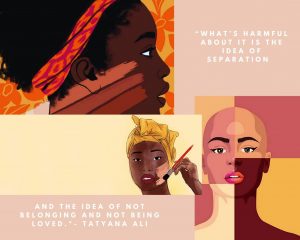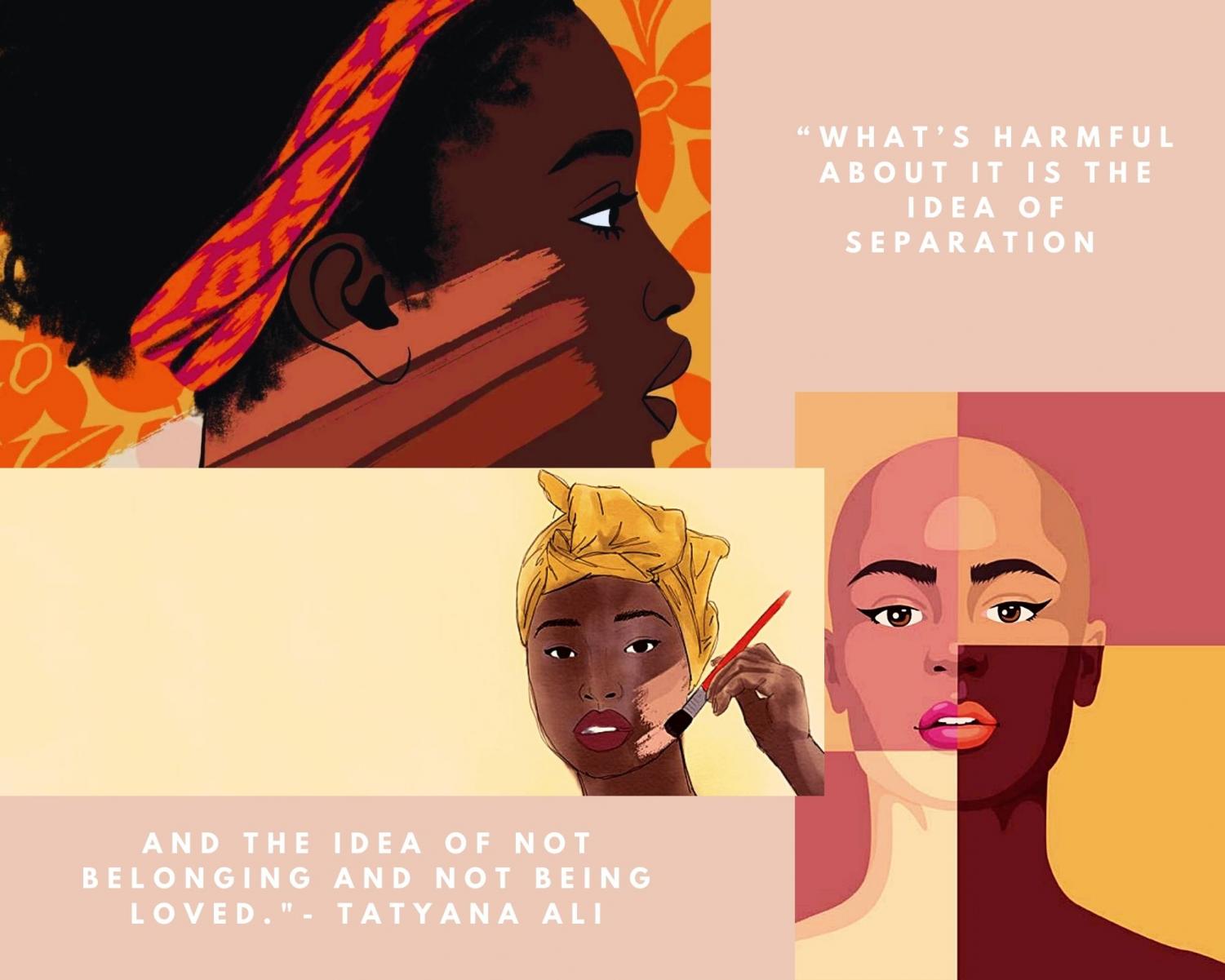Colorism and Its Existence Within Society
February 1, 2024
Research has found that colorism has contributed to adverse effects; such as worse mental well-being, higher suspensions rates, and fewer job opportunities for people with darker skin tones across races and ethnicities. Colorism could be described as an underlying principle of racism as it is the “systemic oppression of people with darker skin tones and the privileging of people with lighter skin tones.” In other words, colorism is the practice of favoring those with lighter skin than those with darker skin, an act that exists amongst communities of color all around the world.

History of Colorism
The roots of colorism date back to the times of early colonization and American slavery. During the colonial era, social hierarchies began to form definitions of formality and informality based on one’s skin tone. Qualities of being noble or holding a position of power were commonly given to those with lighter skin. Historians discovered that this action was performed in a variety of regions such as India, the Philippines, and Latin America. Colonizers who dominated areas that particularly belonged to light-skinned communities pushed out systems of oppression based on a person’s skin color while believing in the enslavement and removal of the natives who had darker skin.
Assistant principal Ms. Young expresses that “The easiest way to control these people and these other lands was to divide and conquer, and one of the more physical ways of dividing and conquering was by skin color.”
Additionally, as mixed ancestry between blacks and whites started to rise, “the spectrum of skin tones among slaves and others who were legally black grew wider.” This resulted in slave owners allowing more privileges within education and freedom to the slaves who had lighter skin. Lighter-skinned slaves were also viewed to be smarter and skillful, and this ideology would even continue after the abolishment of slavery, in matter of African Americans being accepting into schools and earning occupations. Furthermore, not only did this demonstrate prejudice and color discrimination but also formed division among the black community.
“Colorism creates this hierarchy which only enables the divide between people, and as a black woman, that is very adamant in the Black community,” states Senior Jasmine Munyui. “The lighter you are, the more beautiful people perceive you are and you’re held to a higher standard. This creates insecurities amongst people about their skin shade, which is something they simply cannot help.”
One practice that built this division was known as the “Paper Bag Test” used by African American social associations in the 19th 20th century, in which the skin color of individuals was compared to a brown paper bag to determine acceptance and the privileges of that person.
Modern-Day Colorism and How It’s Been Normalized
I like them light skin, lighter than a feather.
— Lil Wayne
In modern times, colorism is now seen in social media and the entertainment and beauty industry. From music lyrics to the casting in movies, television roles, and fashion brands’ lack of representation of darker-skinned actors, actresses, and models, colorism has been displayed in a variety of ways.
Microaggressions are another common form of colorism. For generations, the terms “You’re pretty for a dark-skinned girl” and “You would be prettier if you were a few shades lighter” have been expressed as some way to show admiration towards another person when in reality it’s not a compliment at all.
“It’s never just ‘You’re beautiful, you’re pretty,” Alumni Camille Young voiced.
In today’s world, it appears as if there are two sides: one group of people who actually believe that saying these “compliments” gives the impression of being nice, without actually realizing the hurt that may be caused; and another group who is actually aware of the wrong in what they are saying.
Holding A Discussion
The prevalence of colorism begs the question of what makes it so difficult to talk about.
“Negative impacts are not talked about because many people benefit from colorism and they would rather keep silent about it,” Munyui explains. “The people who are negatively impacted by colorism don’t talk about it because they were taught these ideals since birth. It’s hard to break down colorist beliefs when it was instilled in you since you were born; people would rather choose to look at the positive side instead of the negative side so they feel better about themselves.”
Ms. Young also discussed the discomfort that may hold back the conversation as well. “Racism is hard to talk about, and people want to pretend that it’s not real because it’s uncomfortable.”
Trouble accepting past family skeletons could also factor in as well. “They have to acknowledge that grandma or grandad or mom or auntie or uncle were bigoted against them…because of their skin color, so to have to judge relatives that you love is uncomfortable for people,” Ms. Young describes. “The third reason is that people don’t have language around it [colorism]. People know what it feels like, but they don’t fully understand it enough to talk about it.”
Holding a discussion may cause hesitation, but the moment to release any thoughts will always arrive. Take the time to find a person or a group to talk about the issue of colorism. Create the space for collective healing to display understanding and empathy. One great place to start is by reaching out to Long Reach’s administrators for guidance.
Solutions To Colorism and The Practice of Self-Appreciation and Love
Awareness and educating oneself are two of the most effective ways to address the problems associated with bias towards skin tone. When witnessing someone in a particular conflict, Senior Myaisa Hunter suggests reflecting “…is this person getting in trouble because they actually did something wrong, or are they really getting in trouble because of the color of their skin and how light and dark it is?” Consider whether the situation might look different if someone else were involved.
“To look farther than the surface for underlying instances of disproportionate treatment.” is also a suggestion stated by Senior Sara Jones to help bring acknowledgment of colorism.
Learning how to love and appreciate our skin while appreciating others is an action we can all perform. “All love begins with self-love…self-love is supreme, self-love is divine,” Ms.Young expresses. “If you can look at yourself, if you can love yourself, if you can truly appreciate yourself and be secure of who you are, you’re least likely to be hateful and spiteful towards others.”
Our meanings of self-appreciation and love come in several forms due to the different journeys we have all gone through. Take the time to become aware of the perception you may have of this issue. Once we have individually processed our feelings on the deception or tensions that colorism has brought upon us, the process of collective healing can begin. Additionally, acknowledge the global perspective surrounding colorism and how it is an individual problem and a social problem. During this journey, share the insight you have gained with others and continue to build your definitions.


